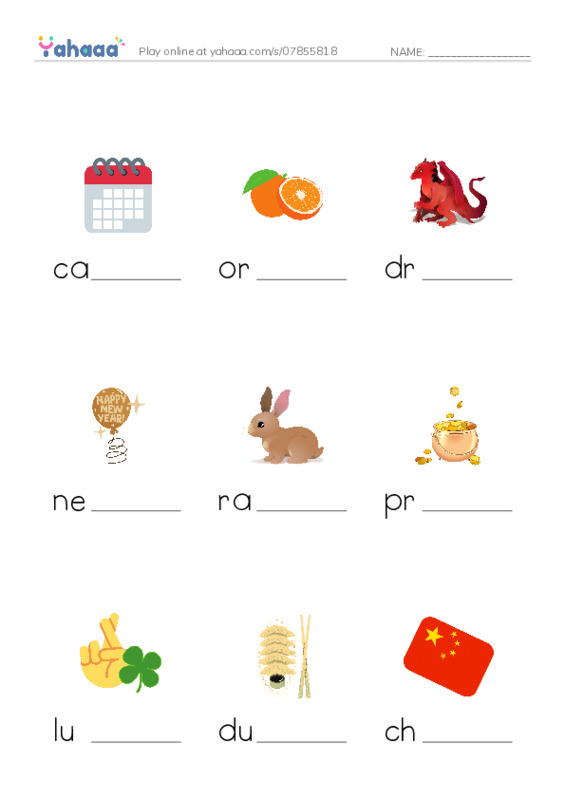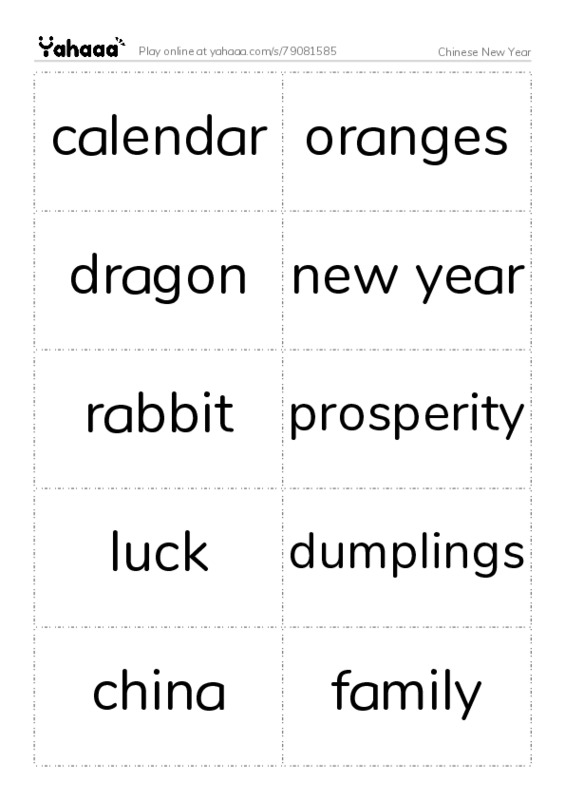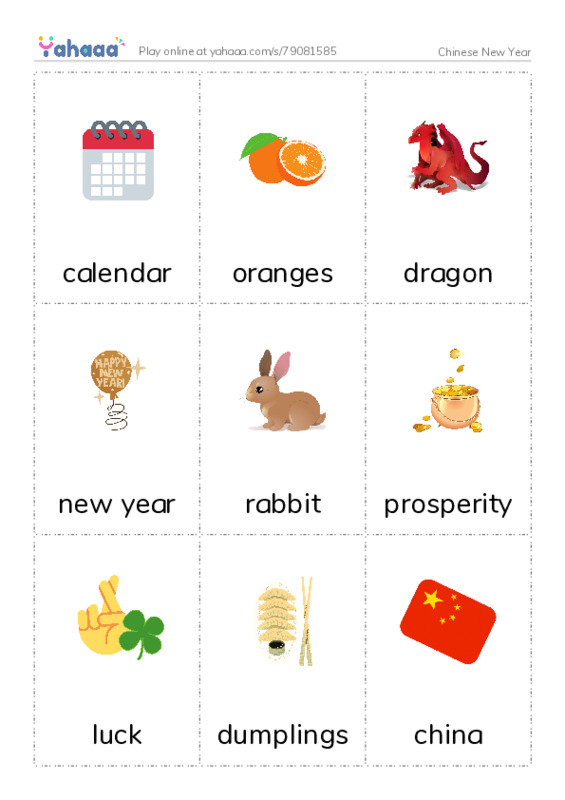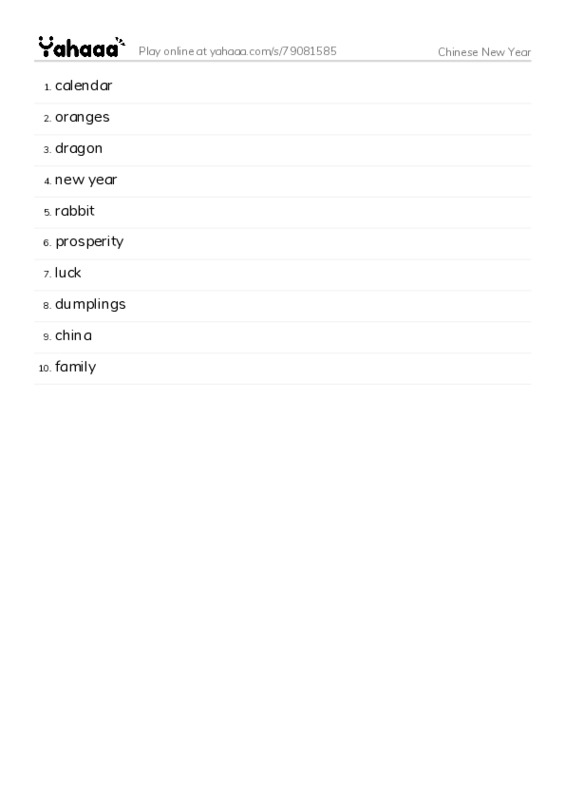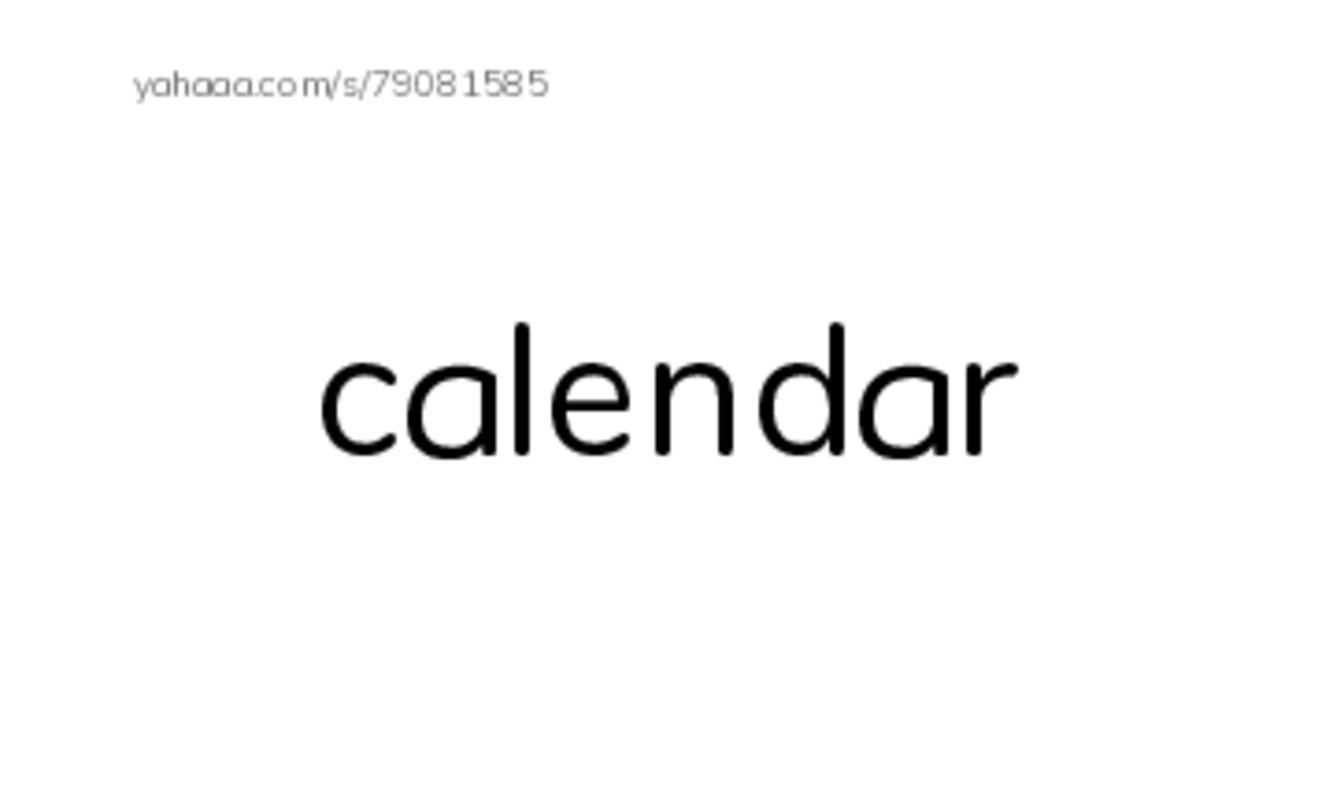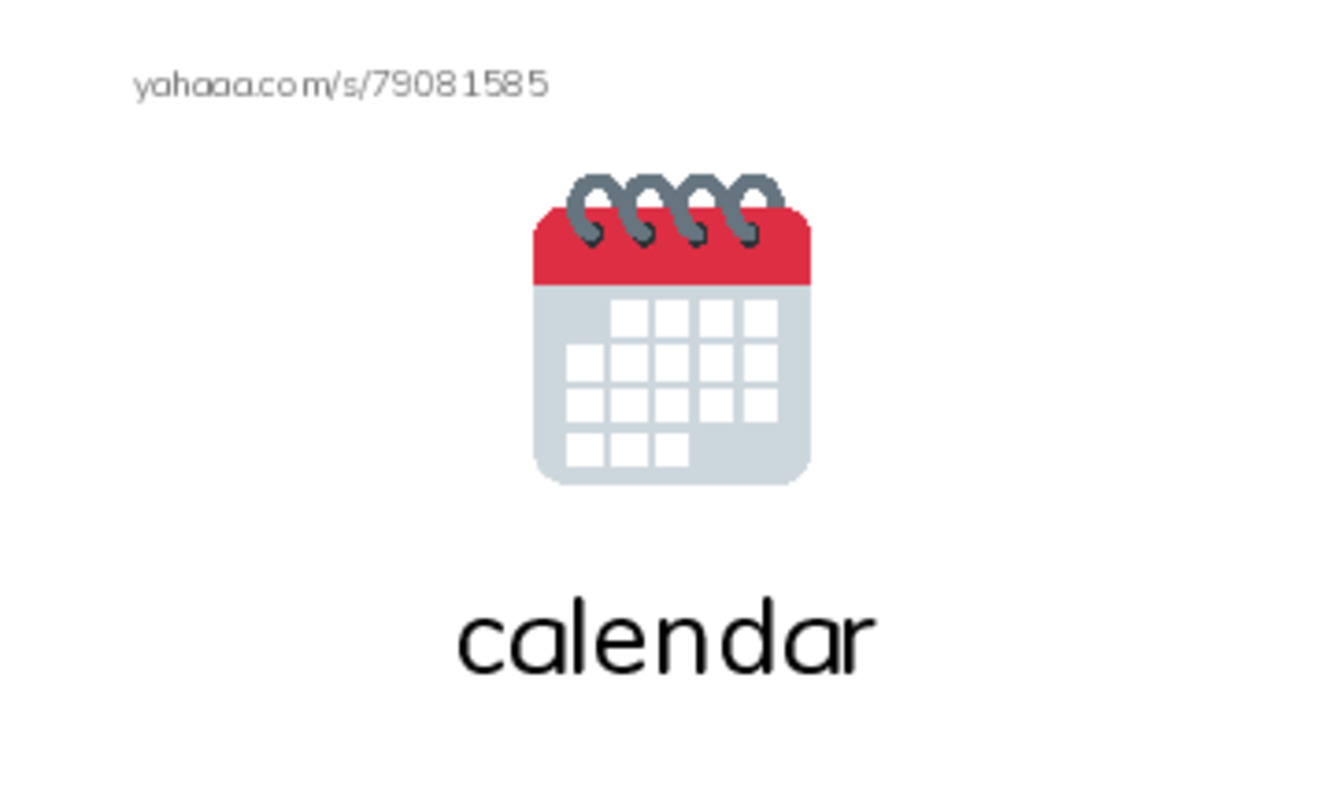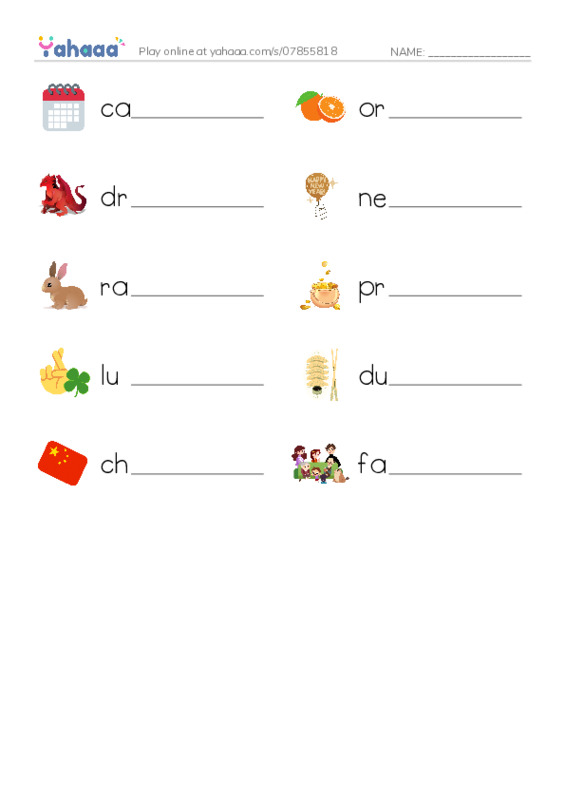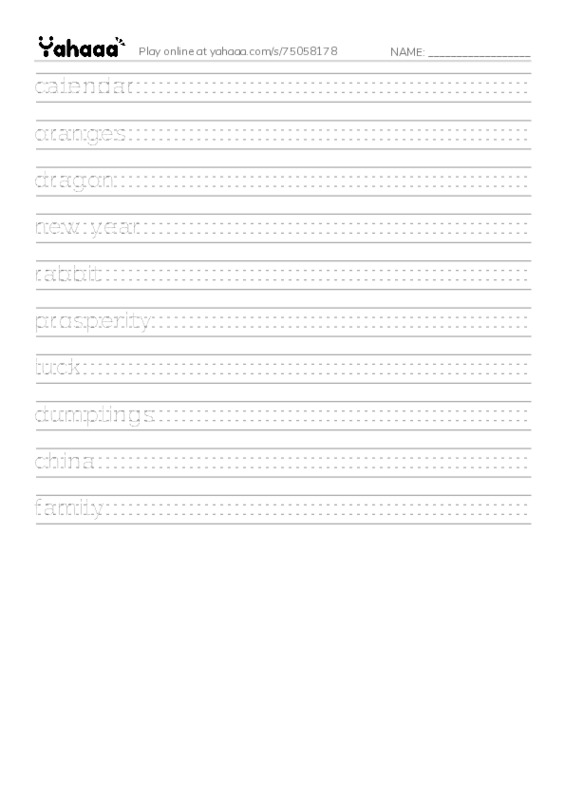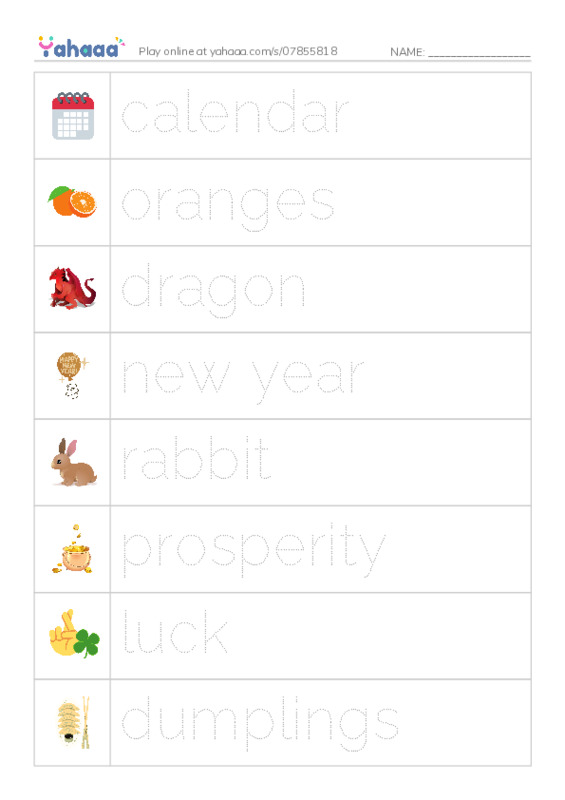The best spelling worksheet for kids to learn to write Chinese new year vocabulary!
A fill in the words gaps worksheet is a useful and fun way to learn vocabulary, especially for a specific topic such as Chinese New Year. This worksheet is a free, printable PDF that can be easily accessed and printed, making it convenient for learners to use at home or in a classroom setting.
To use the worksheet, learners first need to read the provided text, which includes several blank spaces where key words are missing. The learners then need to fill in the blank spaces with the correct words, based on their understanding of the text and the context in which the words are used.
The fill in the words gaps worksheet is a great way to learn Chinese New Year vocabulary because it allows learners to actively engage with the material and practice using the new words in context. It also helps learners to consolidate their knowledge and reinforce their understanding of the vocabulary.
In addition to being an effective learning tool, the fill in the words gaps worksheet is also a fun and interactive way to learn. It encourages learners to think critically and use their problem-solving skills to figure out the correct words, which can be a rewarding and enjoyable experience.
How can this be used by a teacher or parent?
One possible use case example for a fill in the words gaps worksheet in a kindergarten or grade 1 class could be to help children learn basic vocabulary related to Chinese New Year.
For example, the worksheet might include a text with blanks for words such as "red," "lion dance," "firecrackers," and "dragon." The text might describe a child's experience celebrating Chinese New Year, including seeing red decorations, watching a lion dance performance, hearing firecrackers, and seeing a dragon parade.
As the children fill in the blanks with the correct words, they will be practicing their reading skills and improving their understanding of the vocabulary related to Chinese New Year. They will also be learning about the traditions and customs associated with this holiday, which can help to broaden their cultural knowledge and appreciation.
By completing the fill in the words gaps worksheet, children in a kindergarten or grade 1 class will have improved their vocabulary, reading skills, and cultural knowledge related to Chinese New Year. They will also have had the opportunity to engage with the material in a fun and interactive way, which can help to make learning more enjoyable and rewarding.
What will a child have learnt after using it?
There are several reasons why it is important for kids to learn to spell Chinese New Year words:
Improved reading skills: Spelling words correctly helps children to improve their reading skills, as they are able to recognize and decode the words accurately. This is particularly important for learning new vocabulary, as it enables children to understand the meaning of the words and use them correctly in their reading and writing.
Cultural appreciation: Learning to spell Chinese New Year words can help children to develop a deeper understanding and appreciation of the holiday and its traditions. It can also help them to learn about different cultures and build their cultural knowledge and awareness.
Language development: Spelling words correctly is an important aspect of language development, as it helps children to understand the structure and rules of the language. By learning to spell Chinese New Year words, children can improve their overall language skills and become more confident and proficient speakers and writers.
Communication: Being able to spell Chinese New Year words correctly enables children to communicate more effectively with others who speak or write in Chinese. It can also help them to feel more confident and capable when interacting with Chinese-speaking people or participating in Chinese cultural events.
